Home>diy>Building & Construction>How To Do An Estimate For Construction


Building & Construction
How To Do An Estimate For Construction
Modified: January 24, 2024
Learn how to do an accurate estimate for building construction projects with our step-by-step guide. Avoid costly mistakes and streamline your construction process.
(Many of the links in this article redirect to a specific reviewed product. Your purchase of these products through affiliate links helps to generate commission for Storables.com, at no extra cost. Learn more)
Introduction
Welcome to the world of construction estimating! As an essential part of any building project, accurate estimating is crucial to success in the construction industry. Whether you are a seasoned contractor or a beginner in the field, knowing how to do an estimate is a valuable skill that will help you stay competitive and profitable.
Estimating for construction involves determining the costs associated with a project, including materials, labor, equipment, and more. It requires a thorough understanding of the project scope, careful analysis of design specifications, and consideration of various factors that can impact the final cost.
In this article, we will guide you through the process of creating a comprehensive construction estimate. You will learn the key steps involved and gain insights into how to gather project information, analyze design specifications, estimate labor and subcontractor costs, and account for overhead expenses. By the end, you will be equipped with the knowledge and confidence to produce accurate and reliable estimates for your construction projects.
Estimating is not only about crunching numbers; it also requires a keen eye for detail, excellent organizational skills, and a solid understanding of construction practices. A well-executed estimate can make a significant difference in the success of your project, helping you avoid cost overruns, meet client expectations, and secure profitable contracts.
So, let’s dive in and explore the step-by-step process of how to do an estimate for construction. Whether you are a contractor, project manager, or construction professional, this article is designed to provide you with valuable insights and practical advice to excel in construction estimating.
Key Takeaways:
- Accurate construction estimating involves thorough understanding of project scope, meticulous gathering of information, and strategic application of markup to ensure profitability and client satisfaction.
- A well-executed construction estimate not only ensures financial viability but also builds trust with clients, setting the stage for successful project execution and strong client relationships.
Read more: What Is Estimating In Construction
Understanding the Project Scope
Before diving into the details of estimating a construction project, it is essential to have a clear understanding of the project scope. The scope refers to the specific work and deliverables that need to be completed within the project. It includes the size, complexity, and requirements of the construction project.
To effectively estimate the project, start by reviewing the project plans, specifications, and any other relevant documents provided by the client or architect. This will give you an overview of the project and help you identify the key components that need to be accounted for in your estimate.
Next, identify the different phases and tasks involved in the construction process. This may include site preparation, foundation work, structural framing, MEP (mechanical, electrical, plumbing), finishing work, and more. Breaking down the project into smaller components will help you estimate each aspect more accurately.
Consider any special requirements or unique features of the project. For example, if the project involves working in a specific location or requires compliance with certain regulations or building codes, those factors may impact the overall cost.
It is also important to assess the project timeline and schedule. The duration of the project can affect labor costs, as well as the need for rental equipment or subcontractor services. Understanding the project timeline will help you allocate resources and estimate the time needed for each task.
Furthermore, consider any external factors that may affect the project, such as weather conditions, site accessibility, or logistical challenges. These factors can impact labor productivity, material delivery schedules, and overall project costs.
The more thorough your understanding of the project scope, the more accurate your estimate will be. Take the time to ask questions, clarify any uncertainties with the client or architect, and gather as much information as possible before proceeding with the estimating process.
By properly understanding the project scope, you can ensure that your estimate reflects the true requirements of the construction project and avoid any surprises or discrepancies down the line.
Gathering Project Information
Once you have a clear understanding of the project scope, the next step in the estimating process is to gather all the necessary project information. This step involves collecting data and documentation that will help you accurately estimate the cost of materials, labor, and other resources.
Start by reviewing the project plans and specifications in detail. These documents will provide crucial information about the size, layout, and design of the project. Pay close attention to the architectural and engineering drawings, as well as any accompanying notes or details.
Make note of the quantities and types of materials required for the project. This includes everything from the foundation materials to the finishing touches. Take note of specific brands or specifications mentioned in the plans, as these may have an impact on the overall cost.
Next, gather information on labor requirements. This includes determining the number of workers needed for each phase of the project and the hours of work required. Consider the skill levels and experience necessary for the tasks at hand, as this can impact labor costs.
Additionally, gather information on any special equipment or tools that will be required for the project. This includes both owned equipment and equipment that will need to be rented or leased. Take note of the costs associated with equipment rentals, fuel, maintenance, and any applicable permits.
Another crucial aspect of gathering project information is researching and obtaining quotes from subcontractors if their services will be required. Subcontractors may be needed for specialized tasks such as electrical, plumbing, or HVAC installations. Collecting quotes will enable you to accurately estimate the subcontractor costs.
Lastly, consider any other expenses that may be associated with the project. This can include permits, inspections, insurance, or other overhead costs. Make sure to account for these expenses to ensure a comprehensive estimate.
By investing the time and effort into gathering thorough project information, you will have a solid foundation for creating an accurate estimate. Keep all the gathered information organized and accessible as you move forward with the estimating process.
Conducting Site Visits
One vital step in the construction estimating process is conducting site visits. Site visits provide firsthand information about the project site, allowing you to assess any potential challenges or factors that may impact the cost and timeline of the project.
When visiting the site, take note of the overall condition of the area. Observe the terrain, existing structures, and any obstacles that may need to be addressed during the construction process. This will help you determine the site preparation requirements and potential additional costs.
Pay close attention to the accessibility of the site. Consider factors such as road access, parking, and any logistical challenges that may arise in transporting materials and equipment to the location. Difficult site access can result in increased labor costs and delays.
Take note of any environmental factors that may affect the project, such as flood zones, protected areas, or high-wind zones. Observe the proximity to utilities, such as water, gas, and electricity, and assess the impact they may have on the construction process and costs.
Additionally, consider the safety and security aspects of the site. Identify any potential hazards or risks that need to be addressed, such as uneven terrain, unstable structures, or nearby high-risk areas. Safety measures and precautions may add to the overall project cost.
During the site visit, it is also crucial to communicate with the client or project owner. Discuss their specific requirements, expectations, and any additional plans that may not be reflected in the project paperwork. This will help you align your estimate with the desired outcomes.
Be sure to take measurements and photographs of the site, as well as any existing structures that may affect the construction process. This information will assist you in accurately estimating the quantities of materials and the scope of work required.
By conducting thorough site visits, you can gather essential information that may not be apparent from the project documentation alone. This will enable you to provide a more accurate estimate and avoid surprises or discrepancies as the project progresses.
Analyzing Design Specifications
One of the key components of estimating a construction project is analyzing the design specifications. The design specifications outline the specific details and requirements of the project, including the materials, dimensions, finishes, and other crucial elements.
Start by thoroughly reviewing the architectural and engineering drawings. These drawings provide a visual representation of the project and offer insights into the structural requirements, room layouts, and overall design intent.
Pay close attention to the materials specified in the drawings. Identify the types of materials recommended or required for each component of the project, such as the foundation, walls, roofing, and finishes. Take note of the quality, durability, and brand specifications, as they can impact the overall cost.
In addition to materials, consider the finishes and fixtures specified in the design. This includes elements such as flooring, cabinetry, lighting fixtures, and plumbing fixtures. These details can significantly impact the overall budget, so it’s crucial to pay attention to the specifications and accurately estimate their costs.
Furthermore, analyze any special design elements or requirements that may be specified. This could include unique architectural features, complex structural elements, or specialized systems such as HVAC or electrical systems.
Once you have a clear understanding of the design specifications, assess the complexity and level of detail required for the construction process. The more complex a design, the more labor-intensive and time-consuming it may be, which can affect the overall cost estimate.
Consider the level of skill and expertise needed for the project. Some designs may require specialized contractors or tradespeople, which can impact labor costs. Additionally, take into account any additional resources or equipment needed to execute the design as per the specifications.
It is important to keep in mind that design specifications can sometimes change throughout the estimating process. As the project progresses, there may be revisions or adjustments made to the design. Stay in close communication with the client or architect to ensure you have the most up-to-date information for your estimate.
By thoroughly analyzing the design specifications, you can accurately assess the materials, labor, and resources required to bring the project to life. This step is crucial for producing an estimate that aligns with the design intent and meets the client’s expectations.
Read more: How To Become A Construction Estimator
Identifying Materials and Resources
Identifying the materials and resources needed for a construction project is a crucial step in the estimating process. Accurately determining the quantities and costs of materials will help ensure that your estimate is comprehensive and aligns with the project requirements.
Start by creating a detailed list of all the materials required for the project. Refer to the project plans and specifications, as well as any other relevant documents, to identify the specific materials needed for each component of the project.
Once you have identified the materials, research suppliers and vendors to gather information on current prices and availability. Contact multiple suppliers to obtain quotes and compare prices to get the best possible rates.
Consider the quality and durability of the materials when selecting suppliers. Opting for lower-quality materials may reduce upfront costs but can lead to greater long-term maintenance and replacement expenses.
It is important to estimate the quantities of materials accurately. Take precise measurements and refer to the design specifications to calculate the required quantities. Factor in any material wastage or additional quantities needed for potential changes or adjustments during the construction process.
Some materials, such as lumber, concrete, or steel, may have prices that fluctuate depending on market conditions. Stay updated with market trends and consider including allowances in your estimate to account for potential price changes.
In addition to materials, identify the resources and equipment needed for the project. This includes tools, machinery, and equipment required to complete the construction tasks efficiently. Consider whether you will need to rent or purchase any specialized equipment and include the associated costs in your estimate.
If subcontractors are required for specific tasks, identify the appropriate subcontractors and obtain quotes for their services. This can include trades such as plumbing, electrical, HVAC, or carpentry. When estimating subcontractor costs, ensure that you factor in their expertise, labor, and any materials they will be responsible for providing.
By thoroughly identifying the materials and resources required for the project, you can create a more accurate estimate. This will help you mitigate the risk of underestimating or overestimating the costs and ensure that you have everything necessary to complete the construction project successfully.
Estimating Labor Costs
Labor costs are a significant component of any construction estimate. Estimating labor accurately is crucial to ensuring that your estimate covers the necessary workforce to complete the project efficiently and within budget.
To estimate labor costs, start by breaking down the project into specific tasks or activities. Identify the different trades or skills required for each task, such as carpentry, masonry, electrical, plumbing, and painting.
Once you have identified the tasks, determine the number of labor hours required for each task. Consider factors such as the complexity of the work, the level of skill or expertise needed, and any site-specific factors that may impact productivity.
Refer to industry standards and productivity rates to estimate the time required for each task. It may be helpful to consult with experienced workers or subcontractors who have expertise in specific trades to ensure accuracy.
Next, determine the labor rates for each trade or skill. This can vary depending on factors such as location, union agreements, and the experience level of the workers. Research industry averages and local rates to obtain a realistic estimate of labor costs.
Consider additional labor costs such as overtime, benefits, insurance, and payroll taxes. These costs can significantly impact labor expenses, so it’s important to include them in your estimate.
Keep in mind that labor costs can vary depending on the project timeline. For example, if the project requires working in adverse weather conditions or tight deadlines, additional labor may be needed, and the associated costs should be accounted for.
When estimating labor costs, it’s important to consider the efficiency of the workforce. Factors such as crew size, worker experience, and supervision can impact labor productivity. Factor in these considerations to ensure an accurate labor cost estimate.
Lastly, remember that communication with the project team, including subcontractors and site supervisors, is key. Discuss the project requirements, timelines, and any specific labor considerations to ensure that your estimate aligns with the actual labor needs of the project.
By accurately estimating labor costs, you can ensure that your construction estimate is comprehensive and realistic, allowing for the appropriate allocation of resources and budgeting for labor expenses throughout the project duration.
When doing an estimate for construction, make sure to account for all materials, labor, equipment, and overhead costs. It’s important to be thorough and detailed to ensure an accurate estimate.
Calculating Equipment and Tools Expenses
Equipment and tools are essential resources in construction projects, and estimating their expenses accurately is crucial for a comprehensive project estimate. Calculating the costs associated with equipment and tools involves considering the rental or purchase costs, maintenance, fuel, and any additional expenses.
First, determine which equipment and tools you will need for the project. Review the project plans and specifications to identify the specific equipment required for different tasks, such as excavators, bulldozers, cranes, scaffolding, and power tools.
If you own the necessary equipment, calculate the depreciation and maintenance costs associated with it. Depreciation refers to the reduction in value over time, so consider the age and condition of the equipment when estimating its costs. Include expenses for regular maintenance, repairs, and any required certifications or inspections.
If you need to rent equipment, research rental companies to obtain quotes for the duration of the project. Factor in the rental rates, delivery charges, and any additional fees such as fuel surcharges or insurance. Be sure to adjust the rental costs based on the project timeline to align with the required rental duration.
In addition to equipment, consider the costs of purchasing or renting tools. This includes both hand tools and power tools needed for various construction tasks. Research prices from suppliers and factor in the quantity needed, any required accessories, and potential replacement costs.
Include fuel costs in your estimate, especially for equipment that requires it. Consider the estimated fuel consumption and current fuel prices to calculate the expenses accurately.
Don’t forget to include any specialty equipment or tools that may be required for specific aspects of the project. Certain tasks may call for specialized equipment or tools that incur additional costs, so be sure to account for those expenses in your estimate.
Remember to consider any storage or security requirements for the equipment and tools. If you need to rent storage space or invest in security measures, factor in those costs as well.
By accurately calculating the expenses associated with equipment and tools, you can ensure that your estimate reflects the true costs of utilizing these resources. This will help you allocate the necessary budget and resources to complete the project effectively and efficiently.
Estimating Subcontractor Costs
In many construction projects, subcontractors play a crucial role in completing specialized tasks. Estimating subcontractor costs accurately is essential for creating a comprehensive construction estimate that encompasses all required services and trades.
Start by identifying the specific tasks or trades that require subcontractor involvement. This can include trades such as electrical, plumbing, HVAC, painting, roofing, or specialized installations.
Once you have identified the subcontractor needs, gather quotes from multiple subcontractors in each trade. Reach out to reputable subcontractors who have experience in the specific tasks required for the project.
When obtaining quotes, provide detailed information about the project scope, specifications, and timelines. This will help subcontractors provide accurate quotes that align with the project requirements.
Review the quotes carefully and consider factors such as the subcontractor’s reputation, experience, and past performance. It’s important to balance cost considerations with the subcontractor’s ability to deliver quality work and meet project timelines.
In addition to the cost of labor, verify if the subcontractor quote includes the cost of materials, equipment rentals, or any other necessary expenses. This will help you determine the full extent of the subcontractor costs and ensure that your estimate is comprehensive.
Consider potential variations in subcontractor costs based on project location, complexity, or market conditions. It’s essential to account for any premium rates or additional costs that may arise from these factors.
Keep in mind that subcontractor costs can sometimes be negotiable. If you find that the initial quotes are higher than expected, consider discussing the scope of work and pricing with the subcontractors to see if there is any flexibility.
Communication with subcontractors is key throughout the estimating process. Ensure that you have a clear understanding of their scope of work, deliverables, and timelines. This will help you accurately incorporate subcontractor costs into your estimate.
By accurately estimating subcontractor costs, you can ensure that your construction estimate reflects the full scope of work required for the project. It allows for a comprehensive evaluation of all skilled trades and services needed to successfully complete the construction project.
Read more: How To Estimate Construction Costs
Accounting for Overhead Costs
When estimating the cost of a construction project, it’s important to account for overhead costs. These are the indirect expenses associated with running your construction business that cannot be attributed directly to a specific project or task. Including overhead costs in your estimate is crucial for ensuring that your business remains sustainable and profitable.
Overhead costs can include various expenses, such as office rent, utilities, insurance, permits, licenses, taxes, office supplies, administrative salaries, marketing, and professional fees. While these costs may not be directly tied to a specific project, they are essential for the day-to-day operations of your business.
Start by creating a list of all the overhead costs specific to your business. Review your financial records, invoices, and expenses to ensure that you include all necessary expenses.
Calculating overhead costs can be challenging, as they can vary from business to business. Some common methods for estimating overhead costs include allocating a percentage of the direct costs, such as labor and materials, or determining a fixed monthly or annual amount based on historical data.
Consider the size and complexity of the project when allocating overhead costs. Larger projects may have higher administrative and operational needs, so the allocated percentage or fixed amount for overhead costs could be higher.
It’s important to ensure that your estimate includes a sufficient allocation for overhead costs. Failing to account for these expenses can significantly impact your project’s profitability and, in turn, your overall business success.
Review your overhead costs periodically to ensure that they are up to date and reflect any changes in your business operations. As your business grows or changes, your overhead expenses may fluctuate, so it’s crucial to regularly reassess and adjust your estimates accordingly.
By accounting for overhead costs in your estimate, you can ensure that you are covering the indirect expenses necessary to support your construction business. This will help you maintain financial stability and accurately determine the true cost of each project you undertake.
Applying Markup
Markup is an important aspect of construction estimating as it accounts for the profit margin and overhead costs of your business. Applying the right markup is crucial for ensuring that your estimate covers all expenses and allows for a reasonable return on investment.
The markup percentage you choose will depend on factors such as the competitiveness of the market, the complexity of the project, and the size of your business. It’s important to strike a balance between being competitive and ensuring profitability.
To determine the appropriate markup percentage, consider your business’s overhead costs, including administrative expenses, salaries, insurance, and other indirect expenses. Calculate the total overhead costs and divide it by the direct costs (the sum of materials, labor, subcontractor costs, equipment rental, etc.). This will give you the overhead percentage.
After calculating the overhead percentage, factor in the desired profit margin. This will depend on your business goals, risk tolerance, and industry standards. The profit margin should reflect a reasonable return on investment for the services and resources you provide.
Add the overhead percentage and the profit margin to the total direct costs. This will give you the total amount with markup. For example, if the total direct costs are $100,000, and the overhead percentage is 20% and the desired profit margin is 10%, the markup would be $30,000 ($100,000 x 0.2 + $100,000 x 0.1).
It’s important to note that markup can vary from project to project. Some projects may require a higher markup due to increased risks, tight timelines, or specific market conditions. Make adjustments to the markup percentage for each individual project as necessary.
Consider the market competitiveness when determining your markup. Assess what your competitors are charging for similar projects and factor in the level of service and expertise your business provides. Being too low or too high compared to the market can impact your ability to win contracts and maintain profitability.
Regularly review and adjust your markup strategy based on market conditions, competition, and changes in your business’s financial standing. Monitor your profitability on each project and make adjustments to your markup strategy as needed.
By applying the appropriate markup, you ensure that your construction estimate accounts for all expenses, overhead costs, and desired profit margin. This allows your business to remain financially sustainable and generate a reasonable return on investment.
Creating the Construction Estimate
Creating a construction estimate is the culmination of all the previous steps in the estimating process. It involves bringing together all the information, calculations, and considerations to provide an accurate and comprehensive estimate for the project.
Start by organizing all the gathered project information, design specifications, labor costs, subcontractor quotes, material quantities, equipment expenses, overhead costs, and the applied markup. Having everything in one place will help ensure that nothing is overlooked.
Break down the project into phases or tasks and estimate the costs for each component. Consider the sequence of activities and their dependencies to create an accurate timeline and cost breakdown.
Calculate the material costs by multiplying the quantities required by the unit prices obtained from suppliers. Include any discounts negotiated or allowances made for potential price fluctuations.
Add the labor costs by multiplying the estimated labor hours for each task by the applicable labor rates. Include any overtime or additional labor costs discussed during the estimating process.
Include the subcontractor costs for specialized tasks by incorporating the quotes obtained from subcontractors. Make sure to account for their expertise, labor, materials, and any other specific conditions discussed with them.
Add the equipment and tool expenses by including the costs of purchasing or renting necessary equipment and tools. Also, account for fuel, maintenance, and any relevant storage or security costs.
Factor in the overhead costs by applying the predetermined overhead percentage to the direct costs. This will cover administrative expenses, insurance, permits, and other indirect expenses necessary for running the business.
Apply the appropriate markup percentage to account for profit margin and additional contingencies. Remember to strike a balance between competitiveness and profitability when determining the markup.
Compile all the costs, including materials, labor, subcontractors, equipment, overhead, and markup, to create a total project cost estimate. Present the estimate clearly, breaking down the costs by phase or task, and provide a summary of the grand total.
Include any assumptions, exclusions, and validity periods associated with the estimate to ensure clarity and transparency with the client or project owner.
Review the estimate carefully to ensure accuracy, completeness, and alignment with the project requirements, scope, and specifications. Double-check all calculations and make sure that all components of the estimate are well-documented and supported by the gathered information.
By creating a well-structured and detailed construction estimate, you provide clarity and confidence to your client or project owner. A comprehensive estimate helps manage expectations, establish trust, and serves as a valuable tool for making informed decisions throughout the construction process.
Reviewing and Finalizing the Estimate
Reviewing and finalizing the estimate is a crucial step in the construction estimating process. It ensures accuracy, reliability, and alignment with the project requirements before submitting the estimate to the client or project owner. By taking the time to review and finalize the estimate, you reduce the risk of errors, miscommunications, and potential disputes down the line.
Start by conducting a thorough review of all components of the estimate. Check the calculations, quantities, rates, and any assumptions or exclusions made during the estimating process. Compare the estimate with the project scope, specifications, and any contractual documents to ensure consistency and accuracy.
Double-check all the gathered project information, design specifications, labor costs, subcontractor quotes, material quantities, equipment expenses, overhead costs, and the applied markup. Ensure that everything is included and accurately accounted for in the estimate.
Review the estimate from the client’s perspective. Put yourself in their shoes and consider whether the estimate addresses their needs, aligns with their expectations, and meets their budgetary requirements. Look for any potential areas of concern or confusion that may need further clarification.
Consider having a peer or colleague review the estimate as well. Fresh eyes can help identify any potential oversights, errors, or areas that may benefit from further refinement. Their input and feedback can add valuable insights and improve the overall quality of the estimate.
Once the estimate has been thoroughly reviewed and any necessary revisions or adjustments have been made, it is time to finalize the estimate. Ensure that all the costs are accurately summarized, including a breakdown by phase or task and a grand total. Provide a professional and organized presentation of the estimate to enhance clarity and understanding.
Include a cover letter or executive summary that highlights key points, assumptions, and any additional details that may be relevant to the estimate. Communicate clearly and transparently about the scope, limitations, validity period, payment terms, and any other important aspects of the estimate.
Finally, save a copy of the finalized estimate, both in digital and hardcopy formats, for your records. This will serve as a reference and documentation of the initial estimate for future reference or potential revisions.
Remember that the estimate is a dynamic document and can evolve throughout the project lifecycle. Keep track of any changes, updates, or modifications and communicate those to the client or project owner promptly to ensure transparency and accurate financial management.
By reviewing and finalizing the estimate diligently, you demonstrate professionalism, attention to detail, and a commitment to providing accurate and reliable estimates. A well-reviewed and finalized estimate sets the stage for a successful construction project and a strong client relationship.
Read more: How To Estimate Labor Cost For Construction
Conclusion
Construction estimating is a vital aspect of the building industry, ensuring that projects are accurately budgeted, resources are allocated efficiently, and profitability is maintained. Through the comprehensive and systematic process of estimating, construction professionals can confidently present detailed and accurate estimates to clients, resulting in successful projects and satisfied stakeholders.
Throughout this article, we have discussed the essential steps involved in creating a construction estimate. Starting with understanding the project scope, gathering project information, conducting site visits, analyzing design specifications, identifying materials and resources, estimating labor costs, calculating equipment and tools expenses, estimating subcontractor costs, accounting for overhead costs, applying markup, and finally, creating and reviewing the estimate before finalizing it.
By following these steps and taking the time to thoroughly understand the project requirements, collect and analyze information, collaborate with subcontractors, and account for various costs and risks, construction professionals can create accurate and comprehensive estimates.
It is important to remember that construction estimating is a dynamic process. Market conditions, material prices, labor rates, and project specifications can change. Regularly updating and revising estimates as new information becomes available helps ensure that projects are financially viable and that clients receive the most accurate and up-to-date cost projections.
Accurate estimation is not only crucial for budgeting and financial planning but also for building trust with clients. It demonstrates professionalism, attention to detail, and a commitment to delivering projects on time and within budget. A well-executed estimate establishes a solid foundation for successful project execution and lays the groundwork for strong client relationships.
In conclusion, construction estimating is a skill that requires a combination of technical knowledge, attention to detail, and a deep understanding of project requirements and industry trends. By investing the time and effort into creating accurate and well-thought-out estimates, construction professionals can set themselves up for success in delivering high-quality projects that meet client expectations and drive business growth.
Frequently Asked Questions about How To Do An Estimate For Construction
Was this page helpful?
At Storables.com, we guarantee accurate and reliable information. Our content, validated by Expert Board Contributors, is crafted following stringent Editorial Policies. We're committed to providing you with well-researched, expert-backed insights for all your informational needs.
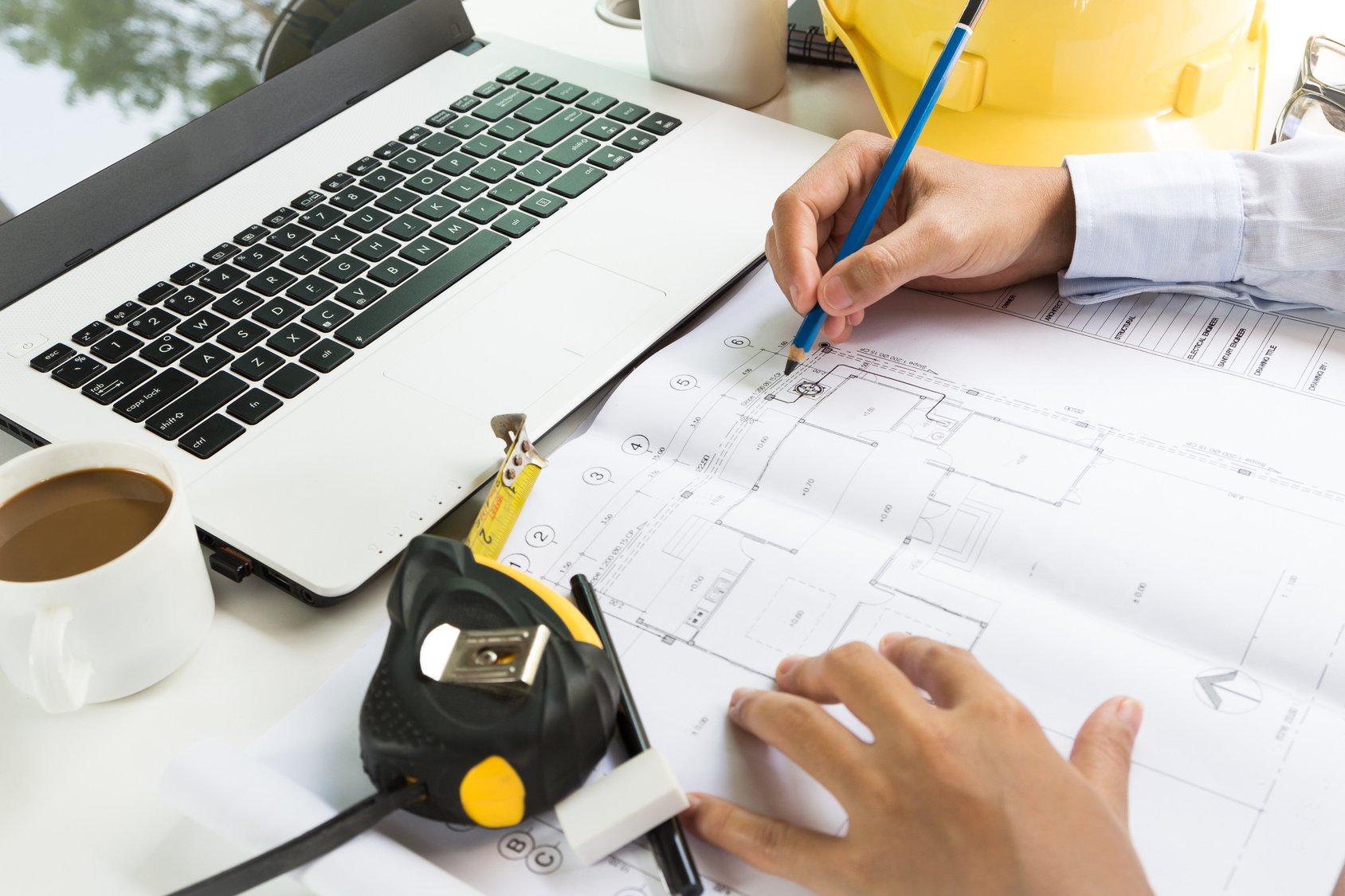



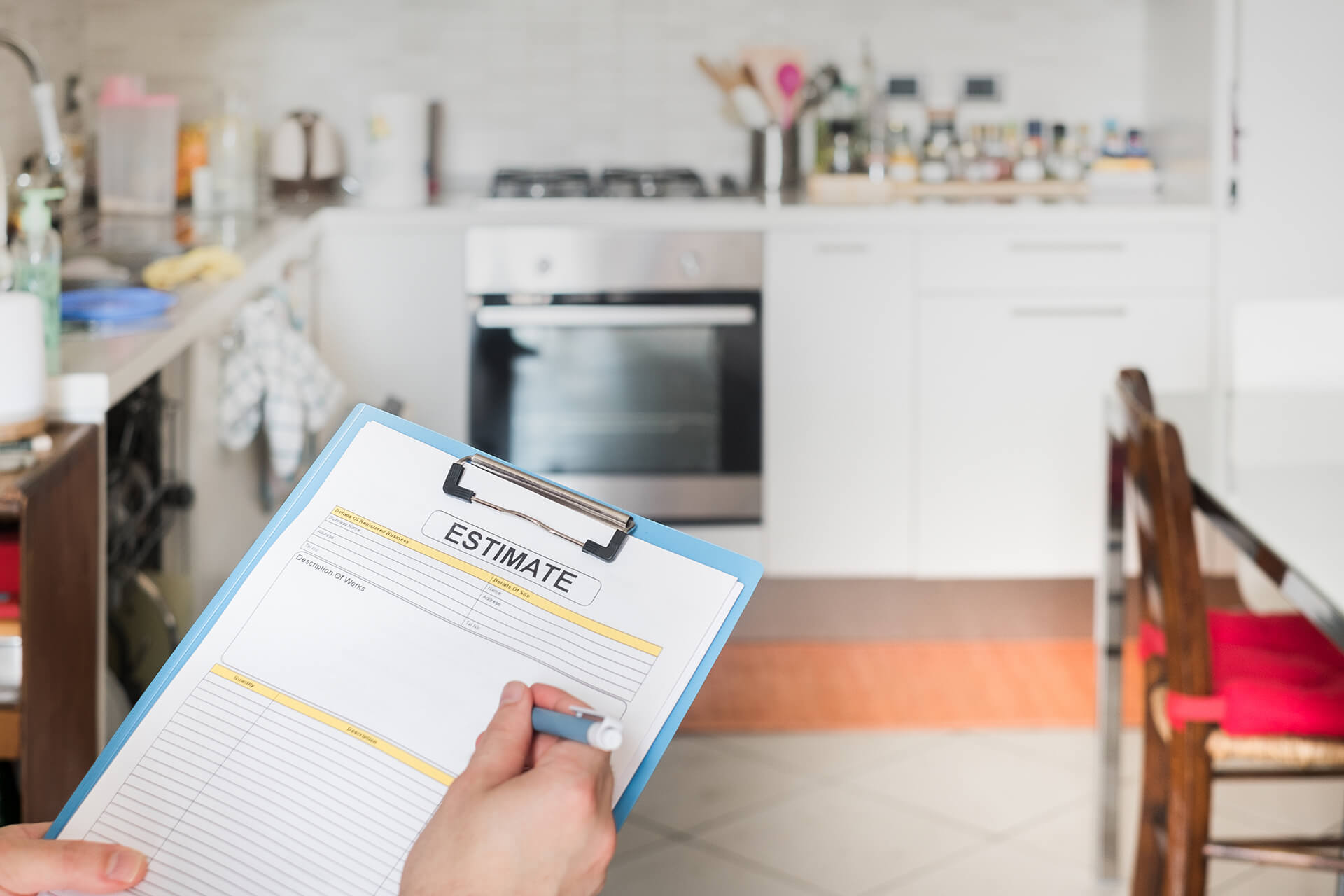



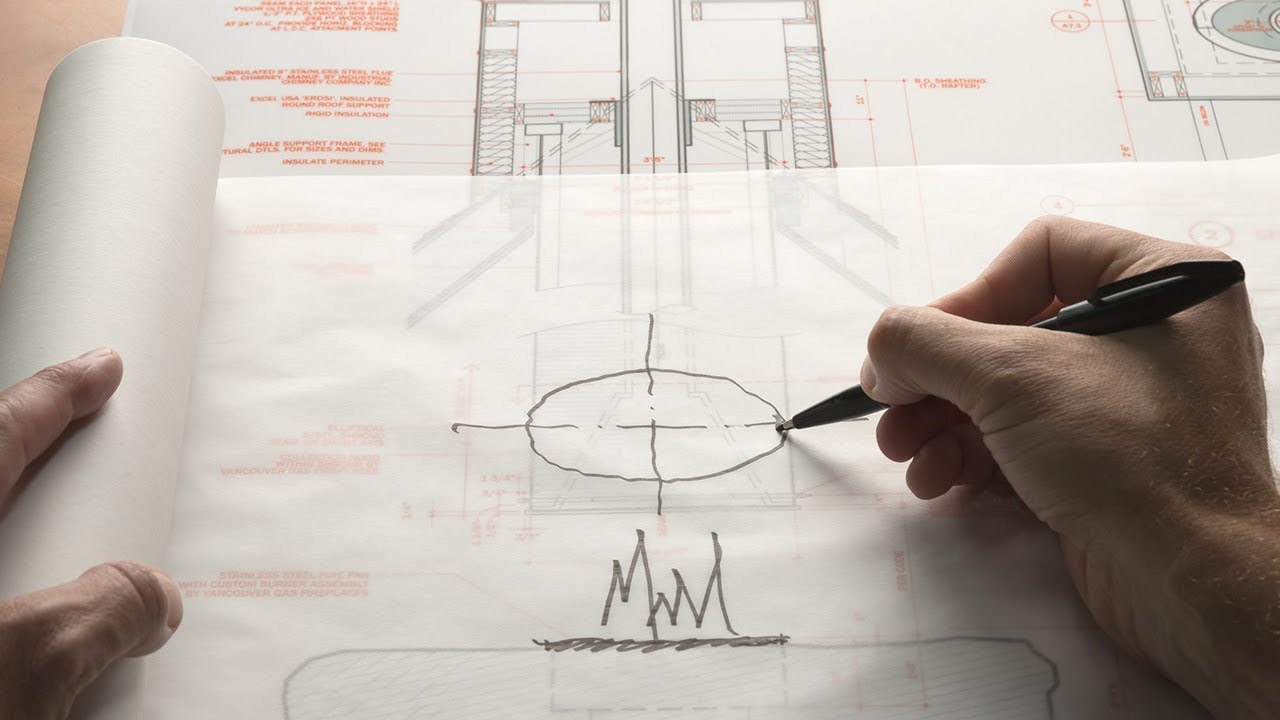
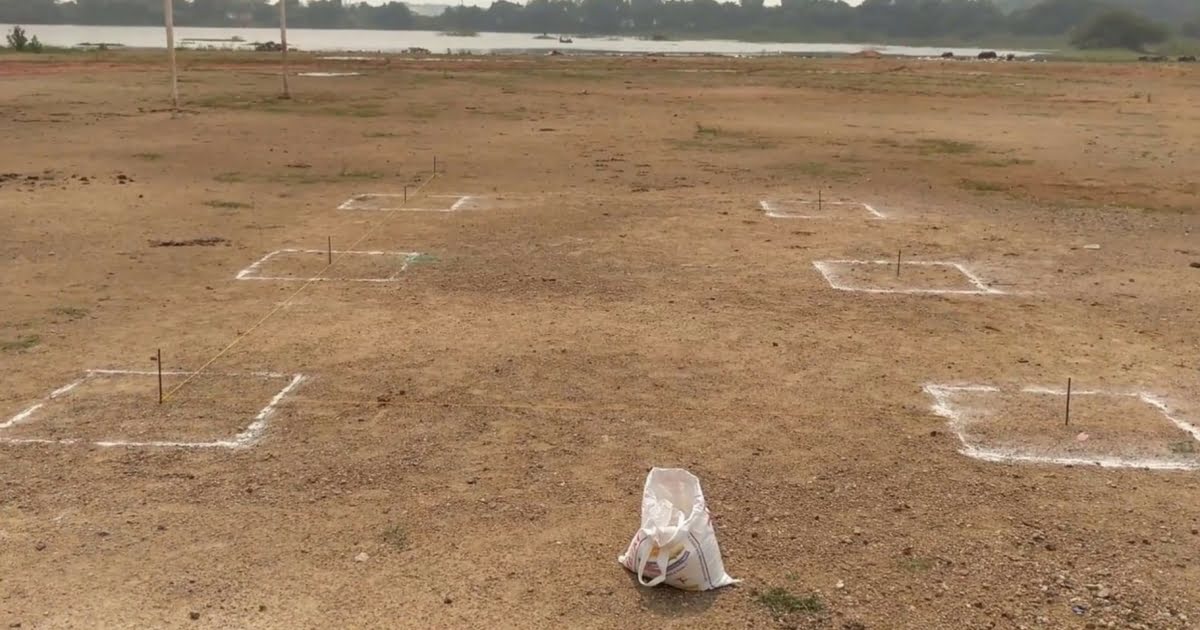
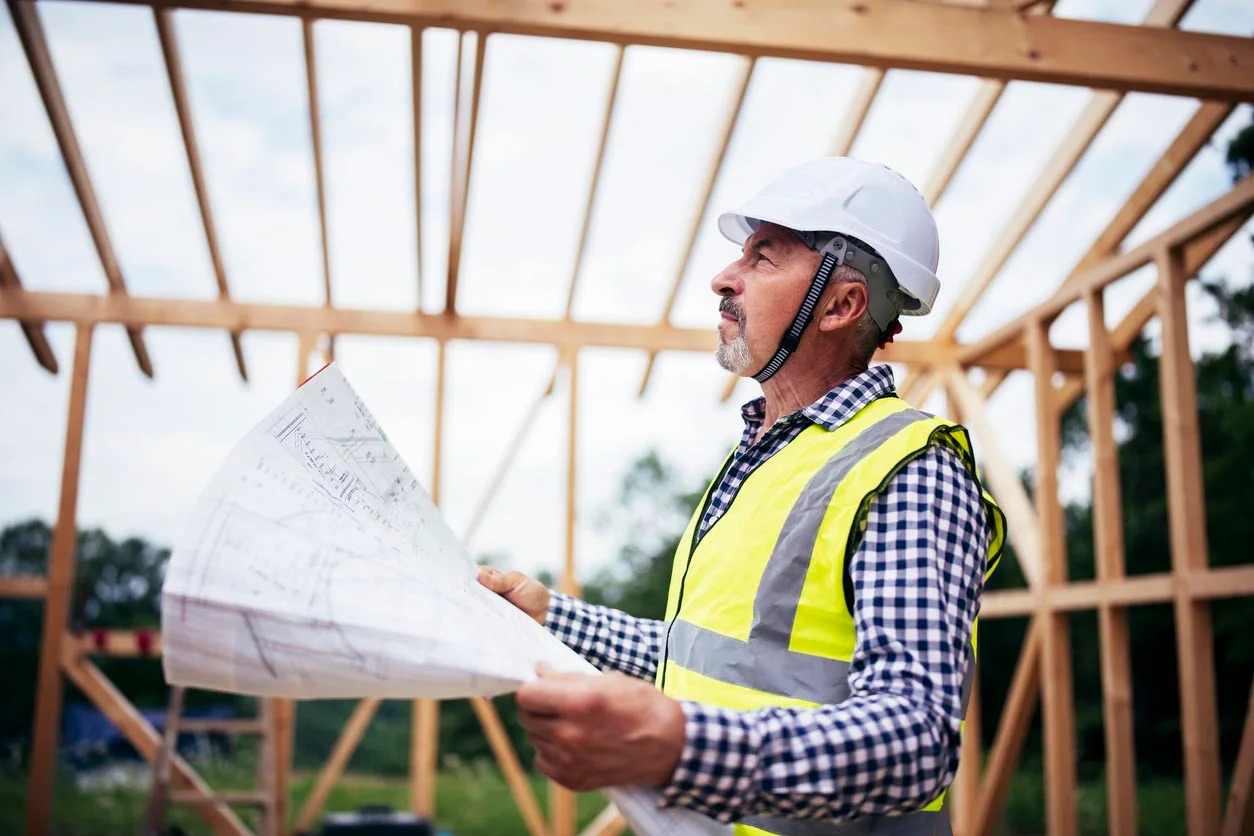


0 thoughts on “How To Do An Estimate For Construction”